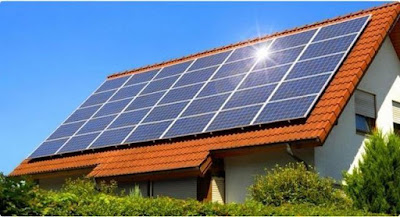The passage of the "Reducing Inflation Act" in the United States has caused heated discussions in all walks of life. A professional lawyer for an energy developer in the United States said that the tax incentives for the independent deployment of energy storage systems in the bill will reduce the number of solar-plus-storage projects deployed.
The Inflation Reduction Act was introduced to reduce U.S. health care costs, encourage domestic manufacturing, and address the climate crisis, energy security and cost concerns.
Incentives for independent deployment of energy storage systems may inhibit solar-plus-storage projects
Through this bill, the ITC incentive for solar + storage projects will be introduced to independently deployed energy storage systems, which means that future investment and financing in this field will reach 369 billion yuan Dollar.
Morten Lund is a partner at the law firm of Stoel Rives, where he has practiced legal advice on energy and infrastructure projects across a variety of technologies, and now focuses primarily on clean energy project development in California.
In interviews with industry media about the potential impact of the bill, Lund emphasized that the bill would incentivize the development of stand-alone energy storage systems, but could inhibit the deployment of solar-plus-storage projects.
“Incentives for independently deploying solar power storage systems to get an investment tax credit would unlock enormous value, and that’s why solar-plus-storage projects would be disadvantaged — in order to qualify for ITC,” Lund said. , The battery energy storage system in the solar + energy storage project must store and use the power of the solar power generation facility, and its power is basically completely provided by the solar power generation facility and not from the grid. This means that the role of the battery energy storage system is relatively limited.”
The ITC typically reduces the upfront investment in equipment purchases for energy storage projects by around 30%. Overall, a roughly one-third reduction in capital expenditure on the required equipment will allow the project to deploy smoothly.
60% of battery energy storage systems will be deployed with solar power generation facilities
According to statistics released by the U.S. Government Energy Information Administration (EIA) in March this year, 60% of the 10GW battery energy storage projects deployed in the service sector of U.S. utility companies in the next two years will be matched with solar power generation facilities. deploy.
According to years of research by the Lawrence Berkeley National Laboratory in the United States, this matching deployment rate is even higher in the western states of the United States. In California, for example, nearly all grid-scale solar systems are equipped with battery storage, including planned projects.
In addition to access to the ITC, significant cost reductions in recent years have been the driving force behind the deployment of solar-plus-storage projects, which will also share land, power grids and Interconnection points for other infrastructure, which further reduces costs.
wever, Gorman pointed out that there is a relationship called "coupling difference" for solar + storage projects (or even wind + storage projects). That's the difference in value between deploying battery storage where the grid really needs it, such as where the grid is congested, and coupling it with a wind or solar facility, because of the investment tax credit, will make it more economically viable in terms of commercial operations.
Battery energy storage systems can provide many different services to the grid, such as frequency regulation, voltage support, and reactive power support. However, Lund said that these services, which can be provided by deploying battery storage systems independently, are difficult to accomplish through hybrid solar-plus-storage projects, because battery storage systems cannot be charged from the grid.
Lund said, “In addition to time-shifting energy, hybrid solar-plus-storage projects provide limited services to the grid, because grid power cannot be used to charge battery storage systems, once independently deployed battery storage systems receive investment tax. Credit (ITC), this restriction will be lifted. Legally, independently deployed battery storage systems can now provide a full range of grid services and are no longer tied. We will not only see the market demand for battery storage The various functions that the energy system provides, and by making the battery energy storage system work, it does create or unlock more value.”
The value of where the energy storage system is located is equally important. Another reason why battery energy storage systems are being mixed with renewable energy generation facilities is limiting their functionality, Lund said, is not deploying battery energy storage systems where the grid needs them, but deploying battery energy storage systems at solar generation facilities. where it is.
Lund also said that while battery storage systems do provide some benefits in helping to integrate renewable electricity, they will also provide more value in other locations chosen by grid operators because battery storage systems are ultimately a grid equipment.
The Lawrence Berkeley National Laboratory study found that solar-plus-storage projects have some of the most meaningful applications based on geographic location and other factors, a sentiment Lund agrees. "In some cases, hybrid energy facilities are actually the best designs, and they still exist," he said. "But what strikes me as odd is that it's extremely unlikely that they will be the dominant configuration."
As for why, Lund said it still depends on what other stakeholders, such as banks, utilities and regulators, want to get from energy storage. But he believes the introduction of the ITC for independently deploying energy storage systems is a good step towards accelerating deployment.





No comments:
Post a Comment